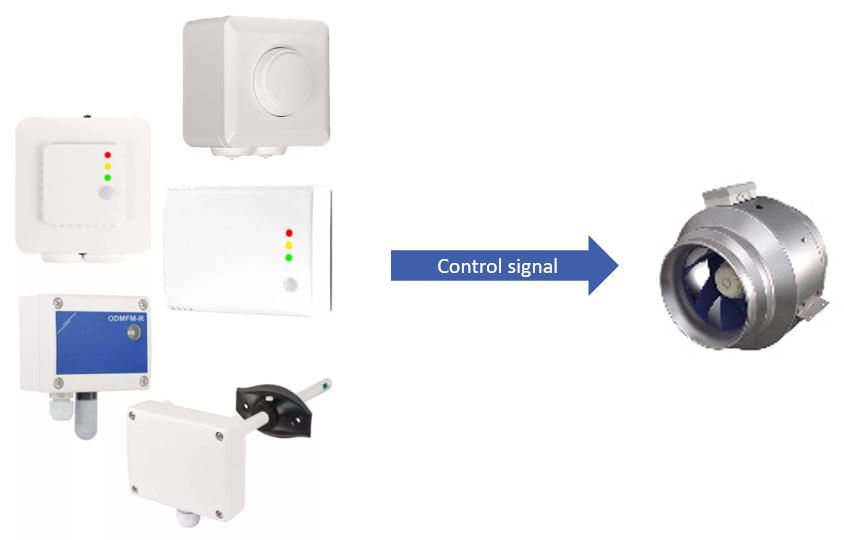How to control EC fan speed?
An EC motor or Electronically Commutated motor can be seen as an AC motor with integrated fan speed controller. The EC motor requires an indication of the desired fan speed. The desired fan speed is sent to the EC motor via a control signal. The control signal can be generated manually via a potentiometer or automatic via a sensor controller. Sensor controllers will adjust fan speed to keep the measured values within range.

A control signal can be analogue or digital:
Analogue control signals
Analogue control signals have been popular in the (home) automation industry for many years. It is a proven, simple technology that works fine if cable length remains limited. To avoid disturbances, it is advisable to separate analogue control lines from power lines, to use shielded cables and to keep cable distances limited.
We distinguish following analogue control signals:
- 0 - 10 Volt
- 0 - 20 mA
- 0 - 100 % PWM (Pulse Width Modulated) signal
Digital control signals
Some EC fans can be controlled via Modbus RTU communication. To control an EC fan via Modbus RTU communication offers many advantages.
- Longer cable lengths (up to 1.000 m) are possible.
- Communication goes in both directions. Requested fan speed is transmitted towards the EC fan. In the other direction, it is possible to receive information about the EC fan via Modbus RTU communication. Motor status, motor speed, motor temperature, actual motor power, etc. can be monitored on a continuous basis.
Both analogue and digital control signals can be generated via digital potentiometers, HVAC sensors or HVAC controllers.
EC motors are usually a bit more expensive compared to AC motors, but they offer a higher energy efficiency.
The above described control signals can be used to send the requested fan speed to EC fans or to AC fan speed controllers.
The AC fan speed controller will translate the control signal into the required motor voltage.
E.g.: 5 Volt will correspond to 50 % of full speed.
More information is available on our microsite: ∞ Understanding fan speed control
The above described control signals can be used to send the requested fan speed to EC fans or to AC fan speed controllers.
The AC fan speed controller will translate the control signal into the required motor voltage.
E.g.: 5 Volt will correspond to 50 % of full speed.
More information is available on our microsite: ∞ Understanding fan speed control
